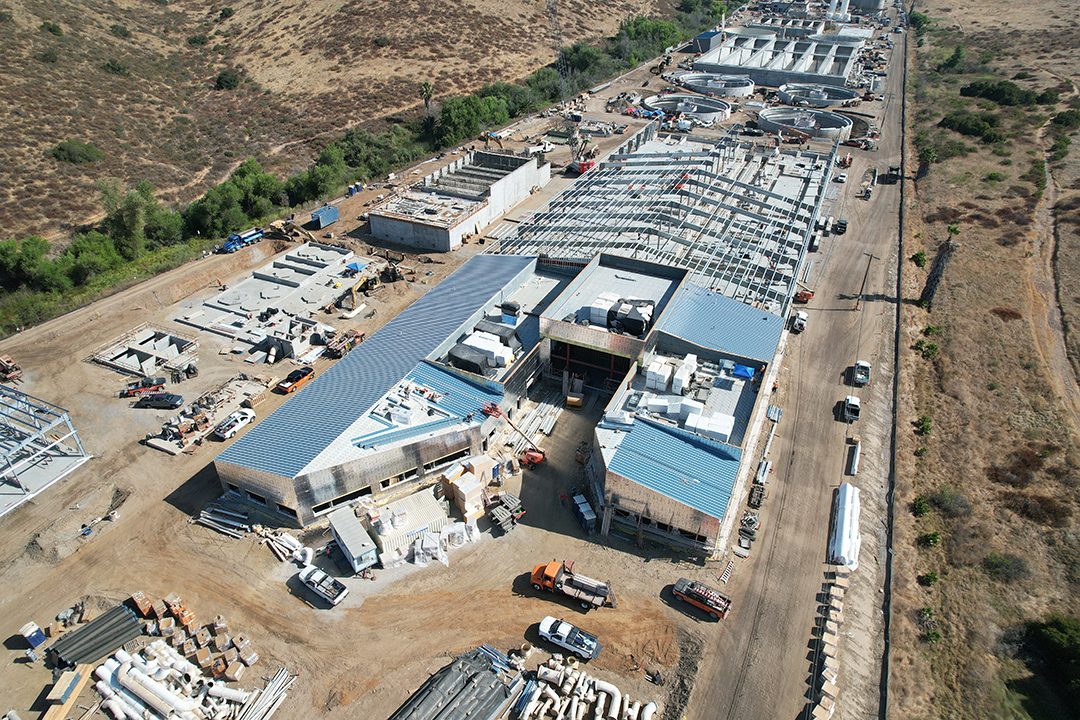The Padre Dam Municipal Water District swore in Kim Hales as its newest member of the Board of Directors on December 9, 2024. Incumbent director Suzanne Till was also sworn in for her second term on the District’s Board of Directors, and will continue serving as the Board’s Vice President.
Hales and Till were elected by their constituents during the November 2024 general election to serve for a four-year term on the Board. Director Till will represent Division 2. Director Hales will represent Division 4.
“I welcome Director Hales and returning Director Till to serving these newly elected terms on the Padre Dam Board of Directors. They will each contribute their own perspectives to the Board as representatives of our community while the Board continues to successfully serve and meet the mission of the District for customers,” shared Board President Bill Pommering.

An overhead view of construction progress on the East County Advanced Water Purification program Education Center. Photo: East County AWP
Kim Hales Brings Science Background To Board
Hales is an Alpine resident, who owns and enjoys a 23-acre ranch with her husband Steve, a retired United States Navy Captain. Together, they manage and care for goats, chickens, dogs, gardens and open space habitat. She holds a Bachelor of Science and Master of Science Degrees in Biology. She has been a Professor of Biology at Cuyamaca College for the last 20 years, and served as interim Dean of Math, Science and Engineering for just under three of those years.
Hales spent much of her professional life on the ocean studying dolphins, marine birds and sharks. She also previously worked as an Animal Handler at the San Diego Zoo.
“I look forward to serving on the Padre Dam Board and utilizing my science background to ensure a sustainable water supply future for decades to come. Water is key to all lives and I am happy to be a part of managing this important resource responsibly,” said Director Hales.
Suzanne Till Pledges To Address Water Affordability
Till was elected her first four-year term in November 2020, and in August 2023, she was named Board Vice President. Till grew up in Lakeside and has lived in Santee for over three decades.
Till is a United States Marine Corps veteran and a former Professor of Geography at Cuyamaca and Southwestern Colleges. She currently teaches geography at Mater Dei Catholic High School in Chula Vista. She has a Ph.D. in Water Resources Geography from the University of Colorado, Boulder, and a Masters in Geography and Urban Planning from San Diego State University.
“I am honored to have this opportunity to continue to serve the constituents of Division 2 in Santee. I look forward to representing them to make sure water affordability is top of mind. I am also looking forward to seeing the East County AWP Project completed,” commented Director Till.
Directors Till and Hales will serve four-year terms ending in December 2028.
Padre Dam provides water, sewer, recycled water, and recreation services to approximately 102,000 residents in East San Diego County, including Santee, El Cajon, Lakeside, Flinn Springs, Harbison Canyon, Blossom Valley, Alpine, Dehesa, and Crest. The District is a public agency with policies and procedures directed by an elected five-member Board of Directors. The District imports 100% of our treated water
supply and treats two million gallons per day (MGD) of wastewater at our Water Recycling Facility.




